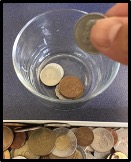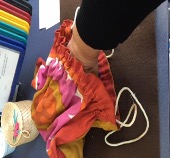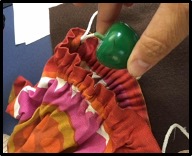How do we build phonological awareness? Active Listening!
Active listening games are designed to teach children to listen carefully and analytically to both sounds in their environment and the sounds used in spoken language. Learning to attend to, and distinguish sounds, is the first step towards later connecting sounds to letters and words. (See Building Phonological Awareness handout from SPS, and other resources for more detail)
Can you remember? (Actions)
Say a list of actions. Have children do actions and add more as you go, as children repeat the list. (Start with 2 and increase to 4-5). “Clap your hands, touch your nose”
Can you remember? (Objects)
Say a list of objects (can use pictures or have real objects as cues). Have students repeat the list. (Start with 2 and increase to 4-5). “shoe, puzzle, crayon”
Say the Sound
Say two sounds, ask children to tell you if they are the same or different. Talk about how, why, and where the tongue, teeth, lips are when they make the sound.
Partner question of the day
Today we are going to talk about what we ate for breakfast. Turn and talk to your partner about what you had for breakfast. Then ask each child what the other person said. Sophia, what did Mark have for breakfast? “Mark had Cheerios.”
Guess the Voice?
One person is the listener and closes their eyes. The teacher chooses a phrase or sentence, perhaps with alliteration (six silly snails), and chooses someone to say the phrase. The listener guesses who is speaking.
Coins in a Cup (or how many claps, taps, etc.)
Drop coins into a cup one at a time while children close their eyes. Ask, “how many”?

Mystery Bags
In a small group take out all the items from the bag and name them. Put items back in bag. Have children reach in a feel for an item, pull it out, and name it. Or children can say, “I feel the ______.” Before they pull it out.

